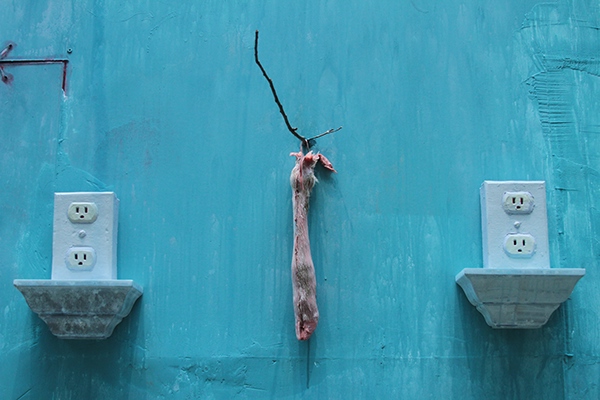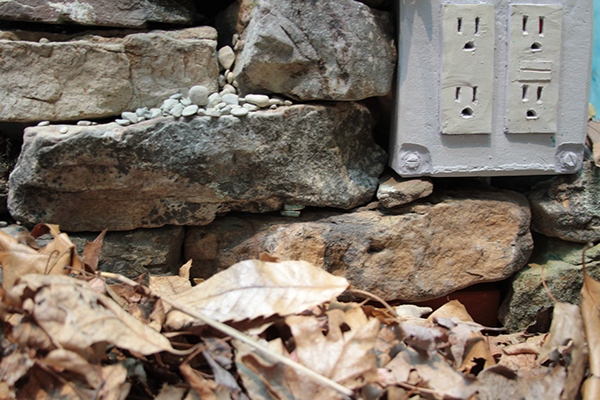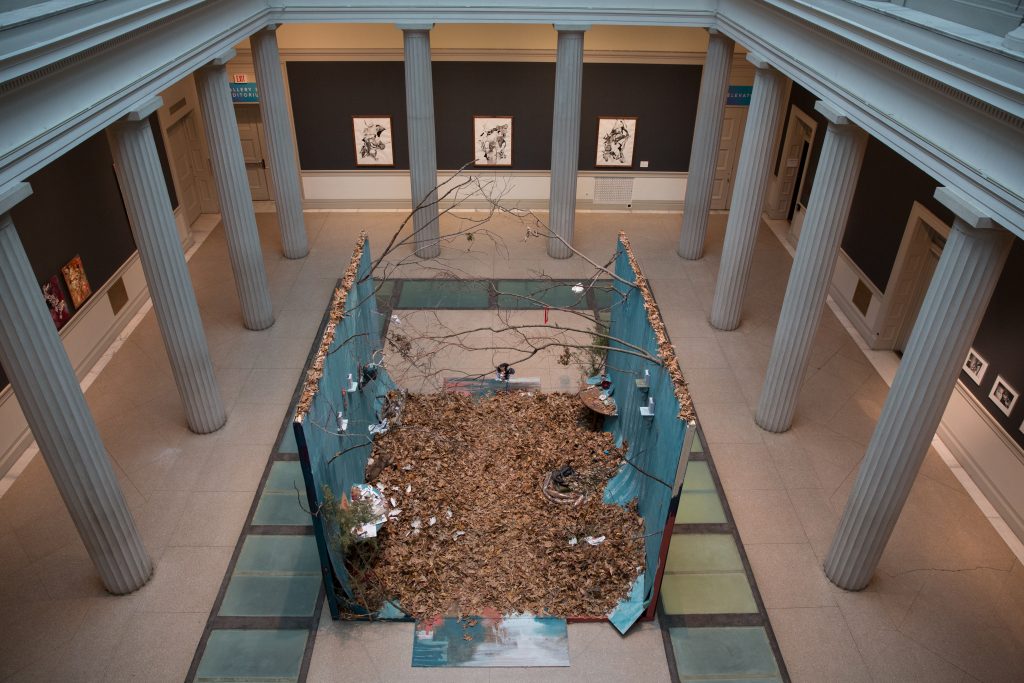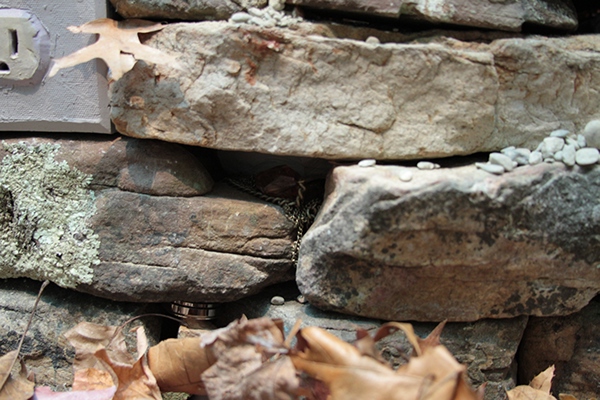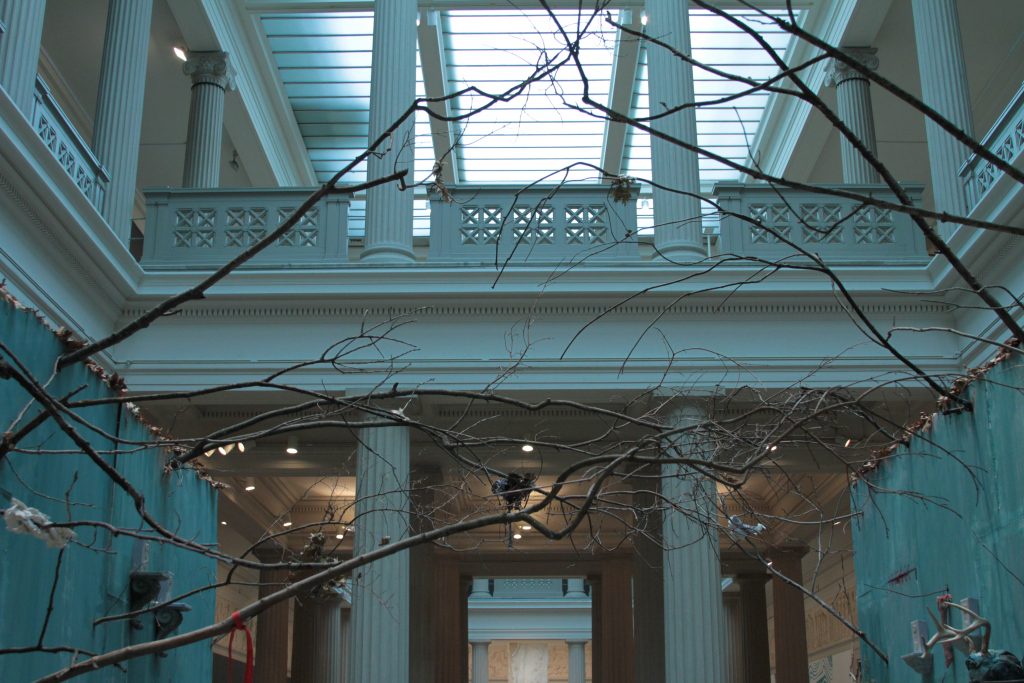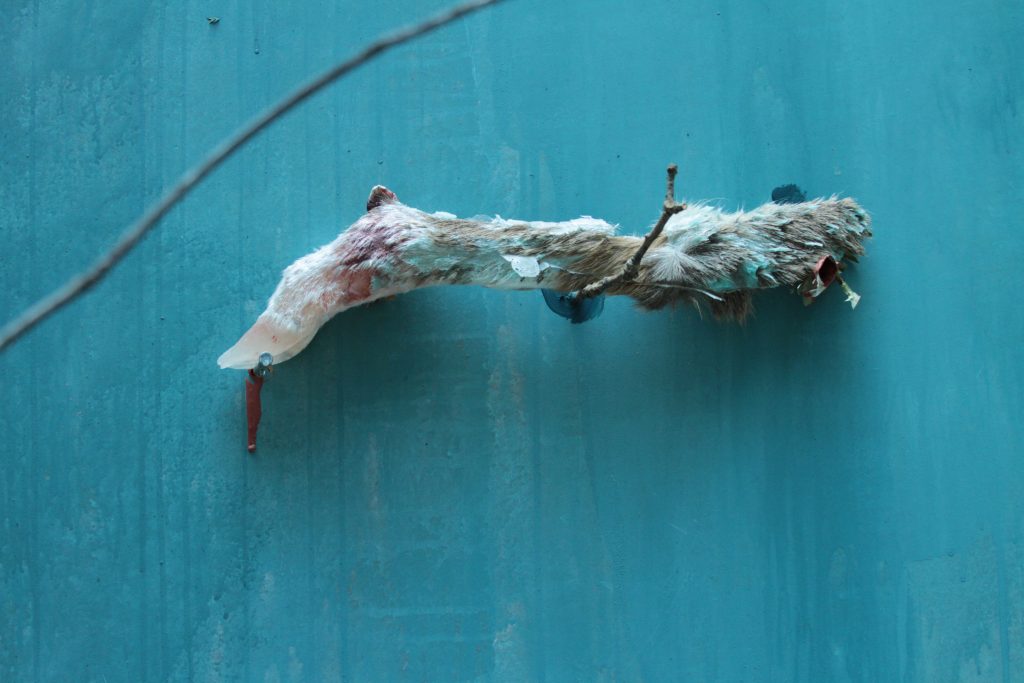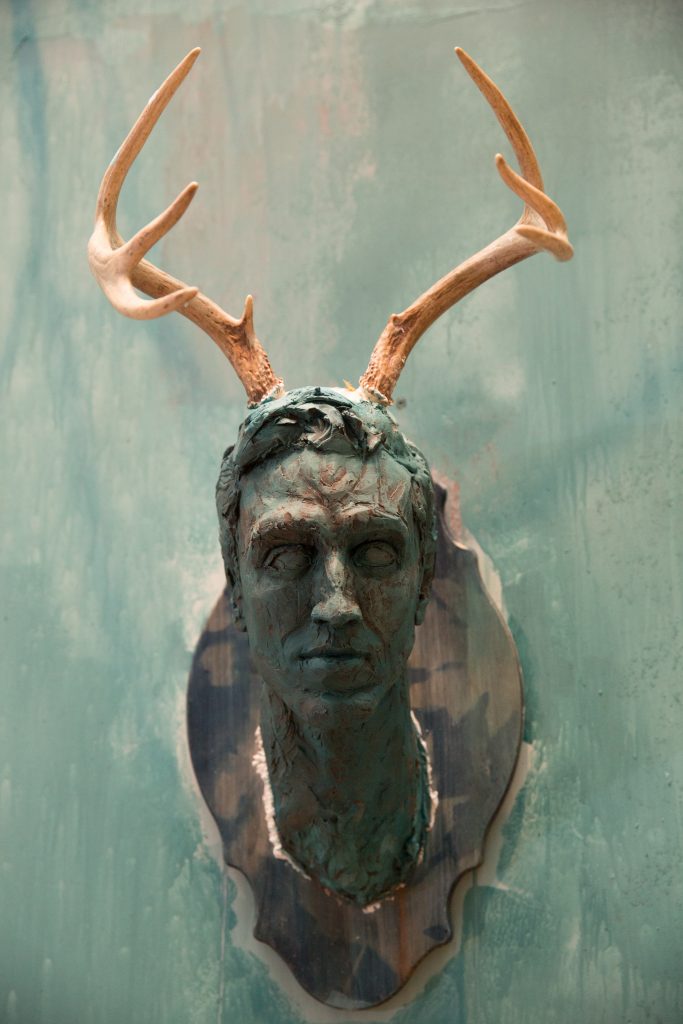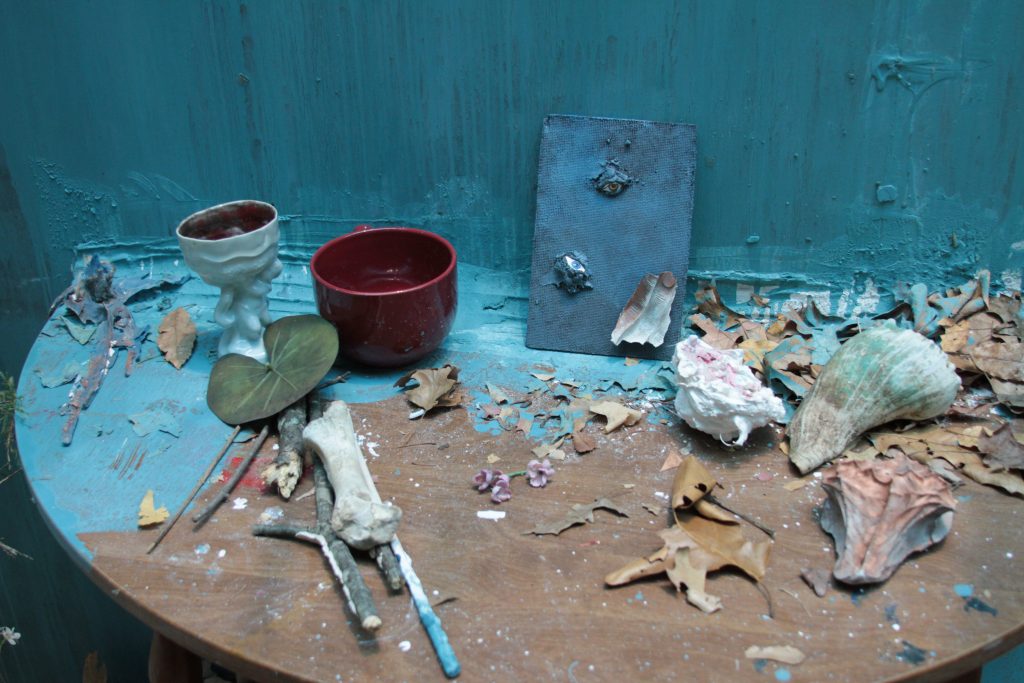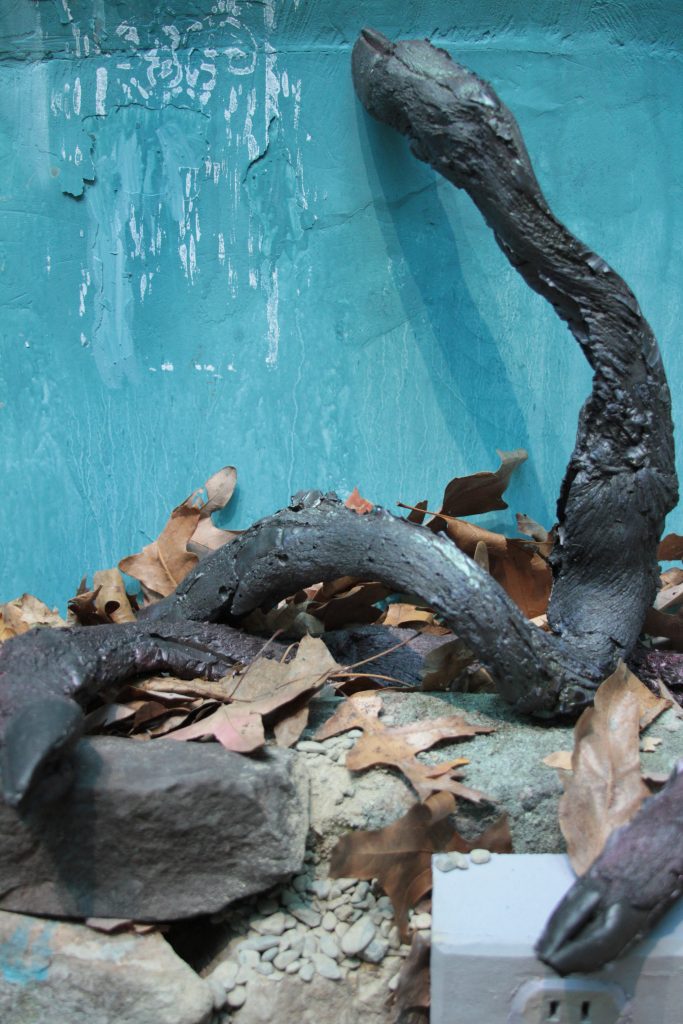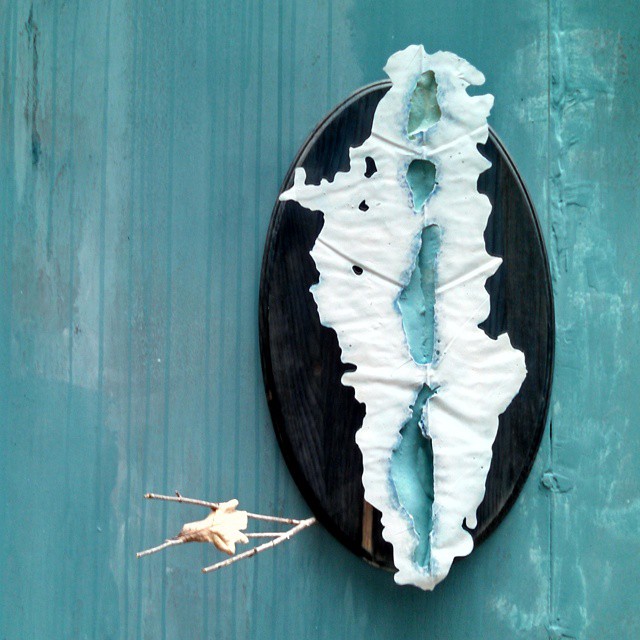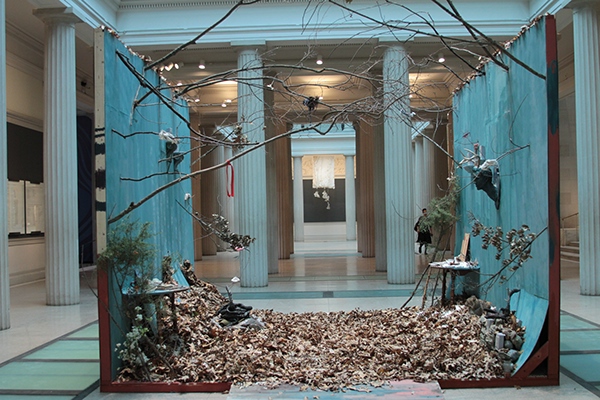Installation, Corcoran Museum
wood, branches, leaves, clay, plaster, resin, hair, fur, silicon, wire, plastic[various polymers and forms], paper, gravel, paint. block printing ink, cyanotype, fasteners, powdered pigment, flocking, jewelry, feathers, housewares, masonite, cedar saplings, conch shells, antlers, burlap, taxidermy.
Sensing a great tension in culture[domestic] between the drives to manipulate and maintain the resources we see as wild, we abate, or else solidify, this tension through the creation of barriers[membrane]. The need for shelter has led us to refine technologies for sealing up our structures and filtering[management] all of the in and outflow as best we can.
The churning and grinding of progress and consumption seems – at least on its surface – to be in direct conflict with any sincere care or desire for restoration. But horror and beauty share a complicated co-existence. Both qualities are necessary within the biological systems of which we are a part: the constant, gross churning which occurs in the grease and gears of the machine of life. The universe generates corrosive compounds and deadly microorganisms as inexorably as awe-inspiring vistas.
Dasein employs surreal and hybrid forms that reflect that duality of the abject and the sublime; a forested room opens onto a building of grandiose design and structure, calling on the viewer to interrogate the tension between inside and out, particularly with regard to domesticized space. While we strive for separation from the actual dirt of living and dying, we romanticize nature and bring it into our homes as synthetic copies or chemically preserved forms.
